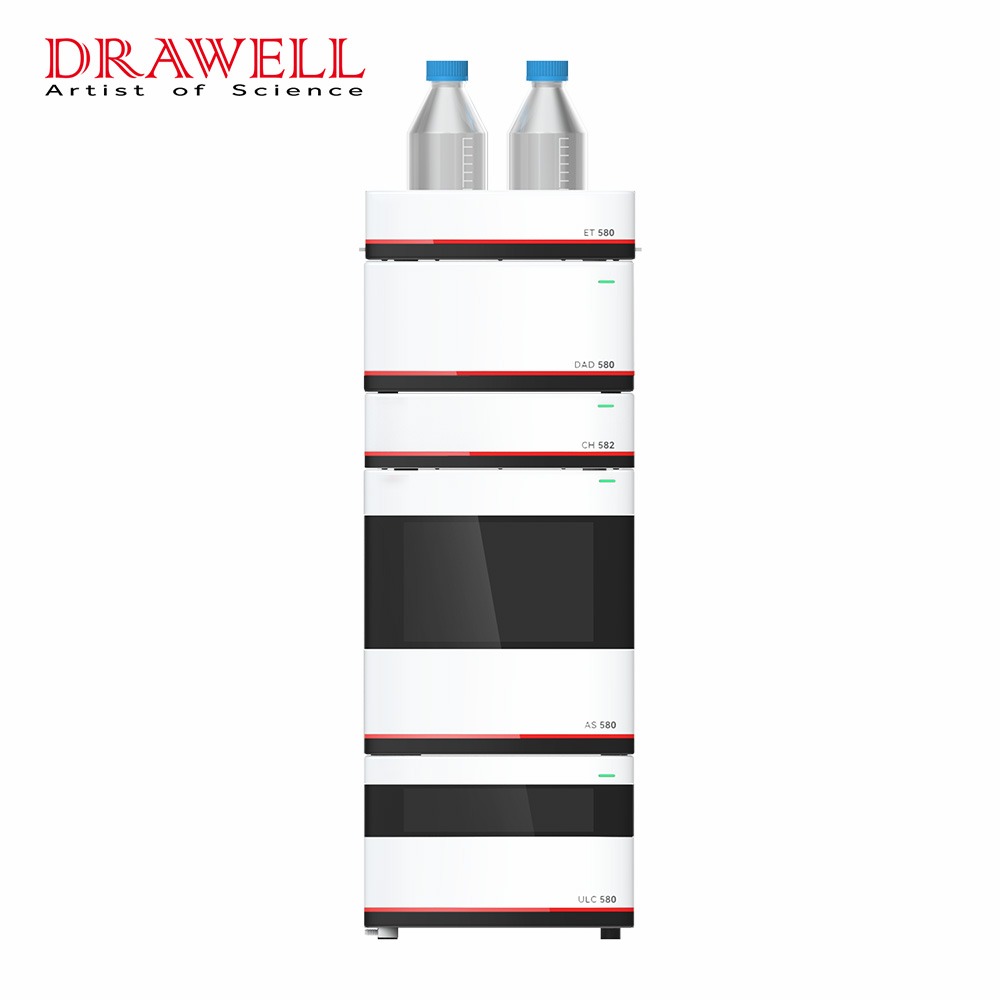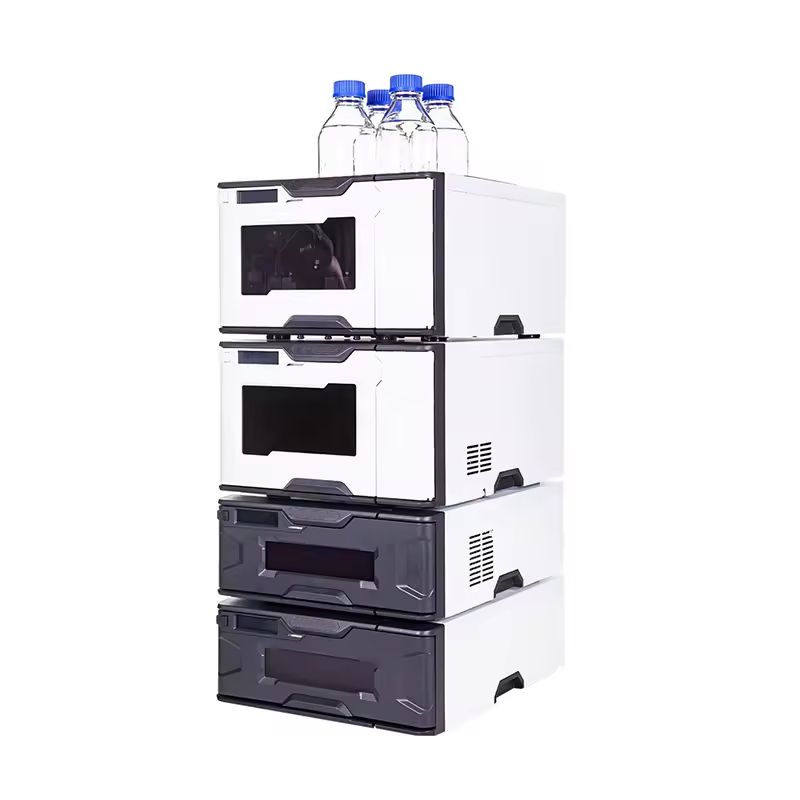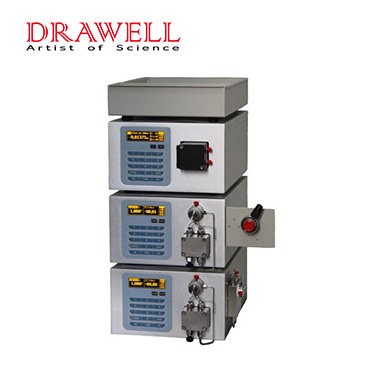High-Performance Liquid Chromatography (HPLC) and Ultra-High-Performance Liquid Chromatography (UHPLC) are two prominent liquid chromatography techniques, with each providing significant benefits in terms of speed, resolution, and efficiency. This article provides a comprehensive comparative analysis of HPLC and UHPLC, shedding light on their principles, key differences, and applications across various scientific disciplines.
Principles of HPLC and UHPLC
Principles of High-Performance Liquid Chromatography (HPLC)
- Stationary Phase
In HPLC, separation takes place within a stationary phase-filled column. The stationary phase is commonly made of silica-based materials, and its surface chemistry influences the interactions with analytes.
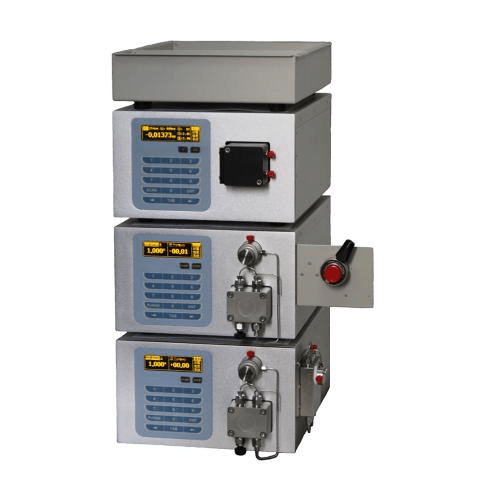
- Mobile Phase
The mobile phase, also known as eluent, is a liquid that moves through the column conveying sample components. It is usually a combination of solvents, with the composition intended to maximize separation.
- Sample Injection
The sample is injected into the mobile phase stream. This is often done using an autosampler, ensuring precision and reproducibility in sample introduction.
- Column Packing
HPLC columns are packed with small particles (3-5 µm) to maximize surface area and increase interaction with the stationary phase. This enhances separation efficiency.

- Separation Mechanism
Separation occurs based on differential partitioning of analytes between the stationary and mobile phases. Components with stronger affinity for the stationary phase spend more time in the column, resulting in distinct elution times.
- Detector
Analytes elute from the column and pass through a detector. Common detectors include UV-visible detectors, fluorescence detectors, and others. The detection method is based on the analytes’ unique properties.
- Data Analysis
The detector’s output is captured and processed to produce chromatograms. Peaks in the chromatogram represent specific components, and their area or height is proportional to the concentration.
Principles of Ultra-High-Performance Liquid Chromatography (UHPLC)
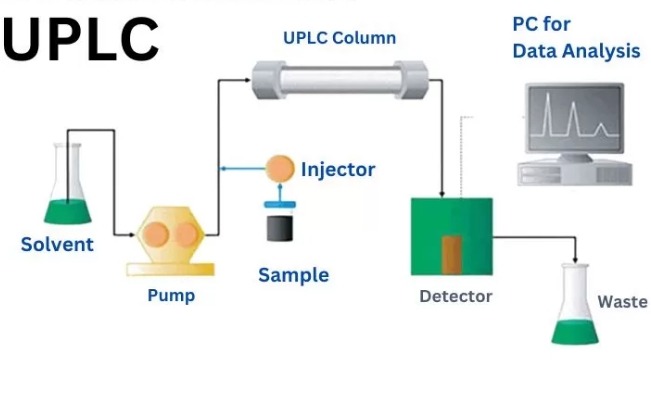
- High-Pressure Operation
UHPLC runs at much higher pressures than HPLC, frequently surpassing 15,000 psi. This high pressure enables the use of HPLC columns containing smaller particles.
- Reduced Particle Size
UHPLC columns have smaller particles (sub-2 µm), which increases surface area and improves mass transfer kinetics. Smaller particles improve separation efficiency.
- Shorter Columns
UHPLC columns are usually shorter than HPLC columns. The combination of smaller particle size and shorter column length contributes to faster separations.
- Increased Resolution
The reduced particle size and increased pressure in UHPLC lead to narrower peaks and enhanced resolution. This is particularly advantageous when dealing with complex samples.
- Advanced Instrumentation
UHPLC systems are fitted with sophisticated apparatus that can resist high pressures. Pumps, detectors, and injectors are designed for optimal performance under these conditions.
- Back Pressure Regulation
Ultra High-Performance Liquid Chromatography systems often incorporate advanced back-pressure regulation mechanisms to maintain consistent flow rates and chromatographic performance.
- Compatibility with HPLC Methods
UHPLC systems are backward-compatible with HPLC methods, allowing laboratories to switch from HPLC to UHPLC without losing existing methods or compromising versatility.
Key Differences of HPLC and UHPLC
This chart provides a concise overview of a comparison between HPLC and UHPLC:
| Aspect | HPLC | UHPLC |
| Operating Pressure | Below 6,000 psi | Exceeds 15,000 psi |
| Particle Size in Columns | Larger particles (3-5 µm) | Smaller particles (sub-2 µm) |
| Separation Speed | Moderate | Significantly Faster |
| Throughput | Moderate | Increased |
| Efficiency and Resolution | Limited by larger particles | Improved with smaller particles |
| Column and Instrumentation | Standard instruments and columns | Specialized instruments and dedicated columns |
| Sample and Solvent Consumption | Higher | Lower |
| Applications | Pharmaceuticals, environmental analysis, etc. | High-throughput applications, QC, etc. |
| Versatility | Well-established and versatile | Specialized for advanced chromatography |

Choosing the Right Analytical Technique Between HPLC and UHPLC
Choosing between HPLC and UHPLC depends on the specific requirements of your analytical needs. HPLC is suitable for routine analyses, while UHPLC is preferred for high-throughput applications and analyses requiring enhanced sensitivity and resolution.
| Criteria | HPLC (High-Performance Liquid Chromatography) | UHPLC (Ultra-High-Performance Liquid Chromatography) |
| Particle Size | Typically 3 to 5 microns | 1.7 to 2.5 microns |
| Pressure Limits | Up to 400-600 bar (5800-8700 psi) | Exceeding 1000 bar (14500 psi) |
| Flow Rate | Lower flow rates (typically 0.1 – 2.0 mL/min) | Higher flow rates (typically 0.2 – 5.0 mL/min or more) |
| Backpressure | Moderate backpressure | Higher backpressure, but with improved efficiency |
| Column Length | Longer columns often required | Shorter columns due to improved efficiency |
| Analysis Time | Longer analysis times due to lower flow rates | Shorter analysis times due to higher flow rates |
| Sensitivity and Resolution | Suitable for routine analyses with acceptable resolution | Higher sensitivity and improved resolution |
| Sample Volume | Larger sample volumes required | Smaller sample volumes due to higher concentration |
| Instrument Cost | Generally lower cost instruments | Higher initial investment for UHPLC systems |
| Operational Costs | Consumes more solvents and may have higher operating costs | Reduced solvent consumption, lower operating costs |
| Applications | Suitable for routine analyses and general chromatography | Ideal for high-throughput analyses, complex separations |
| Laboratory Throughput | Lower throughput compared to UHPLC | Higher throughput, faster analyses |
| Compatibility | Well-established, widely used technology | Rapidly gaining popularity, becoming industry standard |
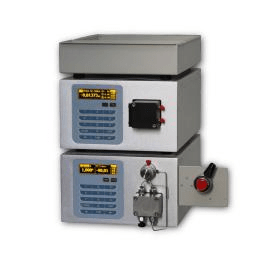
Conclusion
While both HPLC and UHPLC are valuable tools in the analytical chemist’s toolbox, the selection between the two is determined by the specific needs of the analysis. HPLC is still a workhorse for regular applications, providing simplicity and adaptability. UHPLC, on the other hand, is especially useful for applications that require high throughput and improved chromatographic performance due to its increased speed and resolution. As technology advances, the distinctions between these approaches are expected to change, presenting researchers with even more potent liquid chromatography tools.

